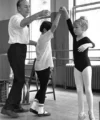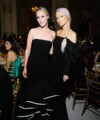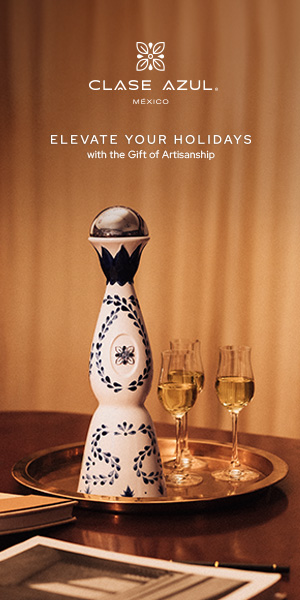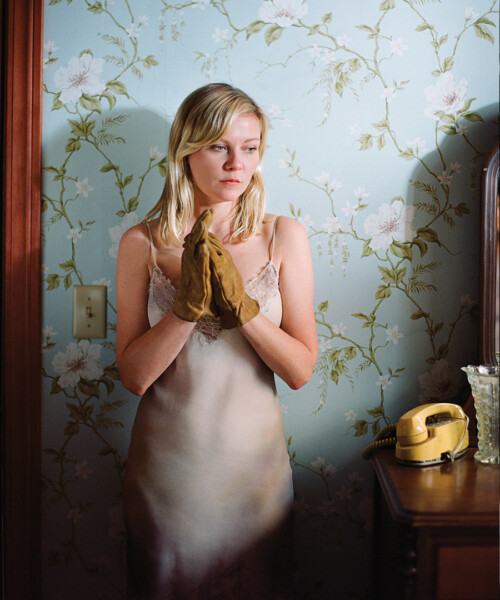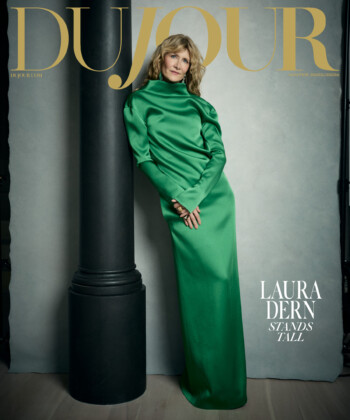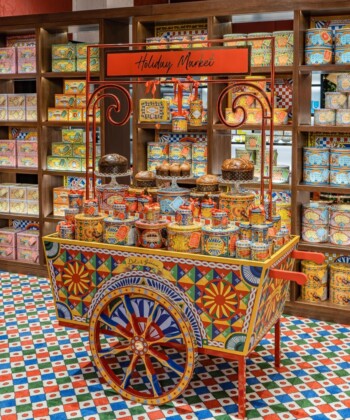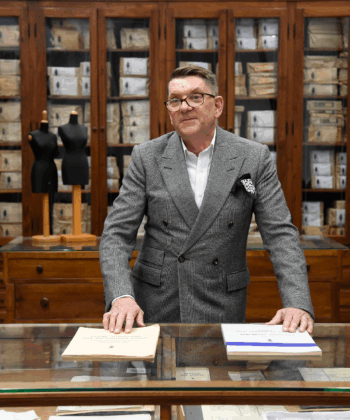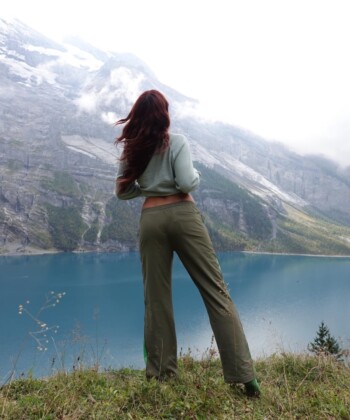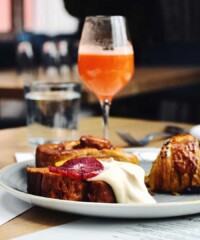In 2010’s Black Swan, the ballerina costumes, created by Rodarte’s Kate and Laura Mulleavy, were more than just couture eye candy. They were dramatic visual signifiers of Natalie Portman’s ratcheting paranoia, which peaks when she emerges onstage as the Black Swan in a jet-black tutu, white face and blood-red eyes.
In Woodshock, the sisters’ trippy, understated directorial debut that follows Theresa (Kirsten Dunst), a medical marijuana dispenser in California’s Humboldt County, as she reels from her mother’s passing, there are no such show-stopping theatrics. While the costumes, like those of Black Swan, do reflect the character’s psychological journey, they do so through minute details—true to the delicate, naturalistic form of a Rodarte gown. “For one black dress Theresa wears, we had made three versions to represent three [stages] of decay,” says Kate. “If you watched it one time, you might not notice the dress is black in one scene and in the next it’s red and black, and in the next scene it’s shredded.”

Kate and Laura Mulleavy
Photo credit: Autumn de Wilde
Like fellow designer-turned-director Tom Ford’s A Single Man, the Mulleavy’s first feature, for which they also wrote the screenplay, is a quiet, visually rich character study. Shot on location seven miles north of the Mulleavys’ hometown of Berkeley, the film’s pastoral setting reflects the sisters’ lifelong fascination with the natural landscape. “Our father studied mushrooms—he was a mycologist—and certainly the fact that he was interested in nature on a very microscopic level had a lot of influence on us,” says Kate (at the most recent Rodarte showing in Paris, models paraded down the runway wearing flower crowns).
But unlike A Single Man, which could have been a two-hour Tom Ford commercial, the costumes in Woodshock are a stylistic departure from Rodarte’s highly embellished glam (Theresa is often wearing a simple slip that, if you look closely, changes subtly as well). “Weirdly enough there just wasn’t an overlap [between our collections and the film],” says Kate. “If anything, it felt more separate than I would have ever expected. I really ended up compartmentalizing them.”

Theresa (Kirsten Dunst) wears a custom black gown designed by Kate and Laura Mulleavy—one of three versions of the dress created for Woodshock.
Photo credit: Autumn de Wilde, courtesy of A24
“They may have affected one another,” adds Laura, “but we would have to have a psychoanalyst come figure that out.”
In fact, the polymathic sisters’ interest in film runs as deep as their fashion sense—a creative adaptivity they owe to their academic backgrounds. “Our interests prior to fashion were based in visual and narrative storytelling,” says Kate. “We both went to UC Berkeley and I was an Art History major and Laura was an English major, and we were taking film history classes, too. You don’t walk away from those things just because you’re in clothing design.”
And yet, Laura adds, fashion and costume design proved to be psychological opposites: “For us, it was about letting go of clothes as concrete signifiers. The clothing wasn’t about what [Theresa] was exactly wearing at this time; it was an emotional reflection.”
Main image: Photo credit: Autumn de Wilde, courtesy of A24




















